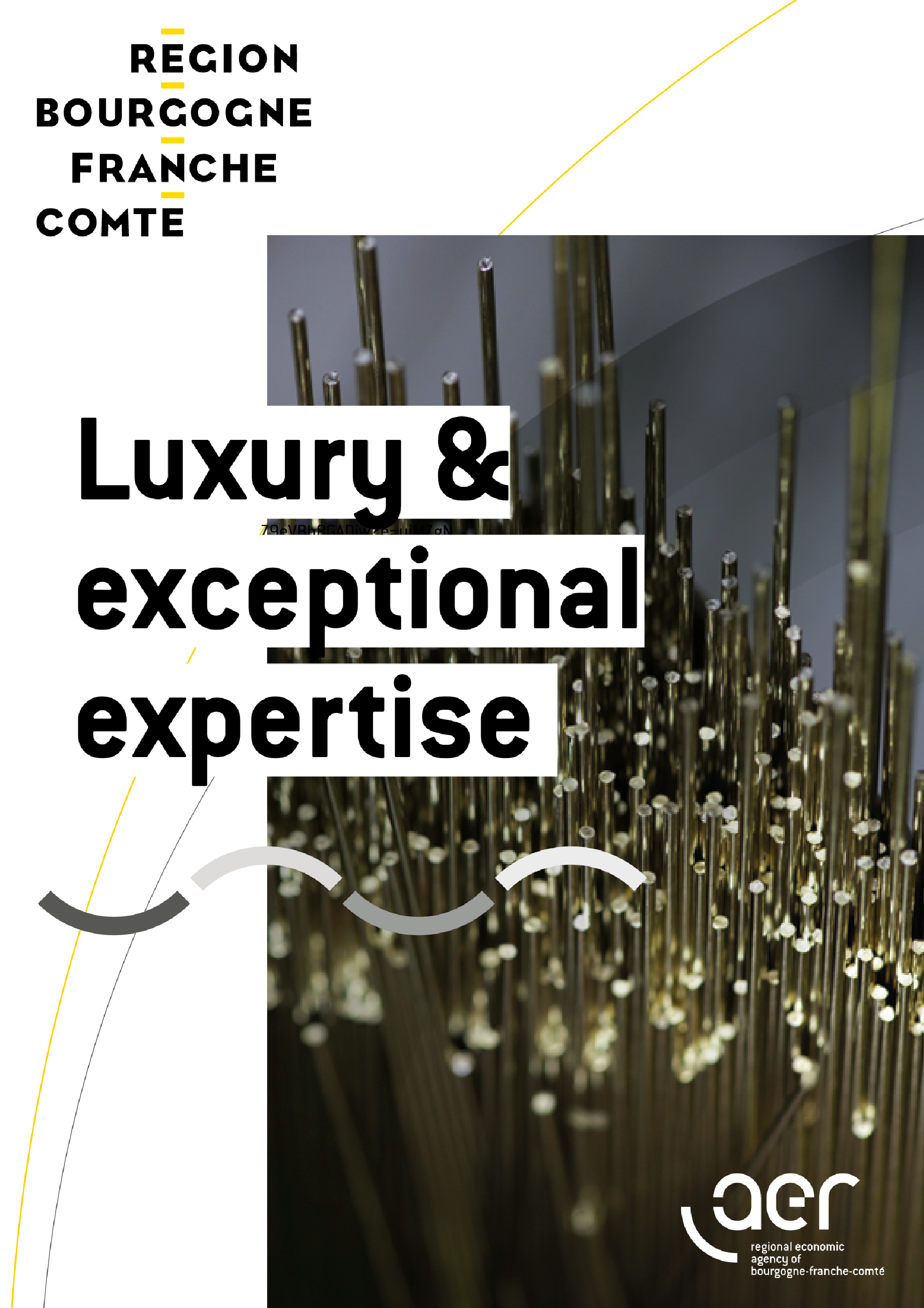Luxury and exceptional know-how
Bourgogne-Franche-Comté

450 establishments
100 Living Heritage Companies (EPV)

15,000 jobs

1,000 craftsmen
The AER BFC supports you

Éloïse PEYRAFORT, Luxury and Exceptional Skills Project Manager, will be your key contact at AER BFC for any project relating to the luxury and exceptional skills sector. With over 20 years’ experience working with companies in the luxury and exceptional know-how sector, she will be able to support you at every stage of your project. She knows the entire regional ecosystem and works with companies, training centres and research centres.
The support offered by AER BFC takes different forms:
- Meetings with high-stake companies,
- Participation in the animation of the ecosystem,
- Targeted prospecting in France and abroad,
- Engineering of company projects,
- Financial engineering,
- Land and business real estate.
Innovative expertise from a long tradition
Member of the Centre du luxe et de la création
AER BFC is a member of the Centre du Luxe et de la Création: The partnership between the Centre du Luxe and Bourgogne-Franche-Comté aims to give visibility to the exceptional know-how present in the heart of its territories.
Large companies established in BFC
Some of these large companies, attracted by a trained workforce and specialised research laboratories, have set up their production and innovation sites here. Some companies born in our territory are flying the colours of French luxury on the international scene with products designed and produced in Bourgogne-Franche-Comté. Bourgogne-Franche-Comté is one of the few European regions with a genuine luxury culture.
In 2022, Bourgogne-Franche-Comté will host the Talents du Luxe et de la Création
Since 2019, the Regional Economic Agency has formed a partnership with the Centre du Luxe et de la Création and participates in the Luxury and Creation Summit to highlight the all-too-discreet talents of Bourgogne-Franche-Comté companies working for production excellence in all areas of luxury.
Bourgogne-Franche-Comté is the only French region that has developed recognised know-how in all areas of luxury goods: from the art of entertaining and living to the art of the object. The industrial fabric is mainly made up of SMEs, experts in numerous trades, which manufacture components and even products for the world’s leading brands with the greatest discretion. For all these reasons, it seemed obvious to us to celebrate the 20th anniversary of the Talents of Luxury and Creation in our region, cradle of beautiful inspirations. We will therefore host the Talents du Luxe award ceremony on 7 June 2022 at the Saline Royale d’Arc-et-Senans.
3 reasons to choose the BFC:
- Cradle of watchmaking and eyewear ;
- Location of major global companies;
- Exceptional know-how meticulously handed down.
Bourgogne-Franche-Comté, a true culture of luxury.
Attracted by a well-trained workforce and specialised research laboratories, some of the major French companies have set up their production and innovation sites here. Alongside them, companies born in our region are flying the colours of French luxury on the international scene with products designed and produced in Bourgogne-Franche-Comté.
Some companies in the sector:
- Watchmaking: Pequignet, Audemars Piguet, Phenomen, Breitling, LIP, Herbelin, etc.
- Tableware: Lacanche, Cristel, La Rochère, Emile Henry, Peugeot France, etc.
- Leather goods: Hermès Paris, Jean Rousseau, SIS, Maroquinerie Thomas, Créations Perrin, etc.
- Textile: RKF Luxury Linen, Chemises Gauthier, La Compagnie Dumas, Genete, etc.
They have benefited from our support
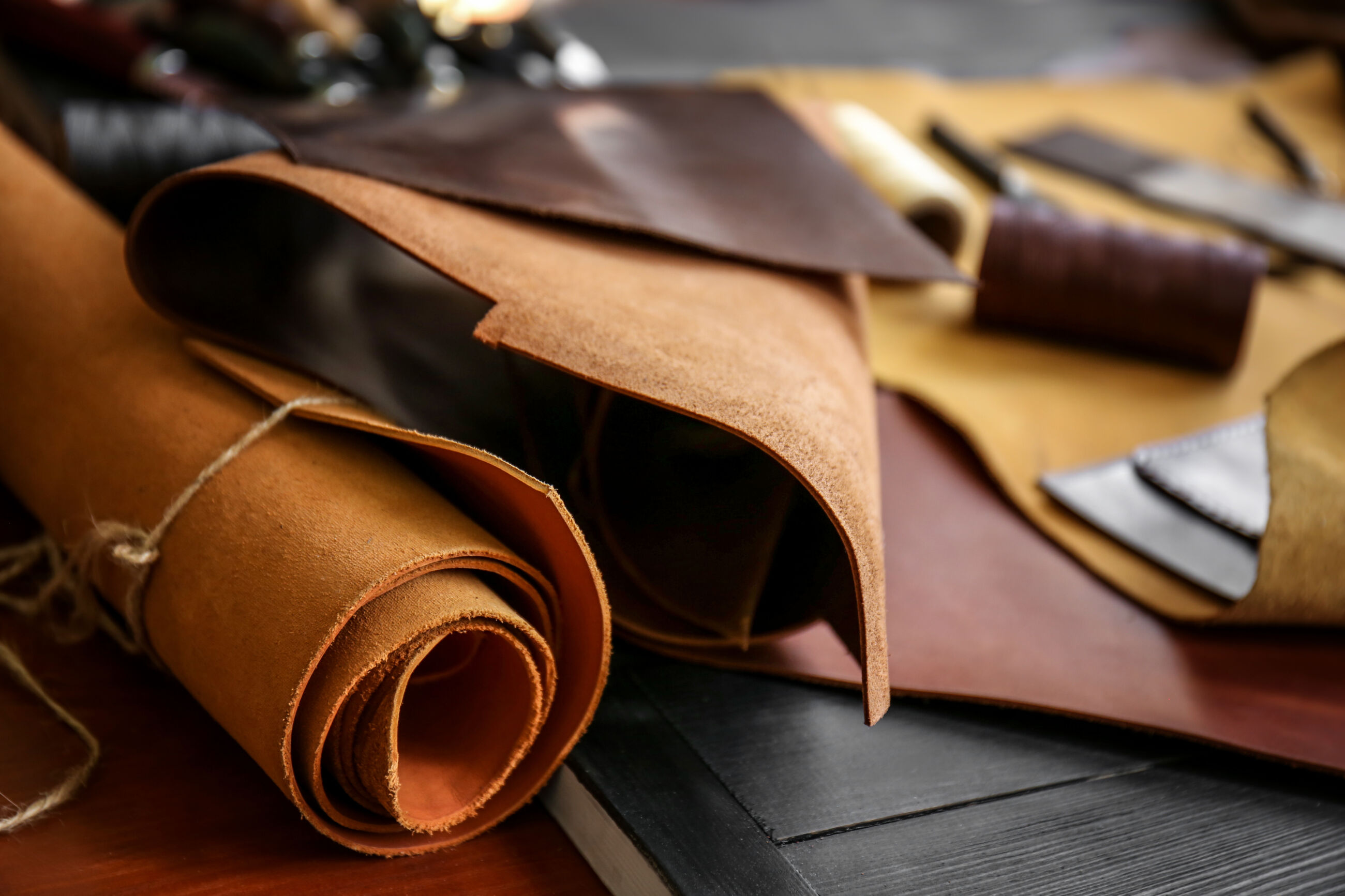
Maroquinerie Thomas
- Type of project: creation
- Activity: leather goods
- Location: Dracy-Le-Fort (71)
- Partners: État, Conseil régional de Bourgogne-Franche-Comté, Pôle Emploi, Grand Chalon
- Expected job(s): 200
The Maroquinerie Thomas group, a manufacturer of leather goods, founded in 1937 and already operating several workshops in France for major fashion brands, employs a total of more than 1,500 employees.
As a family-owned business, it continues to ride the strong momentum of this sector, where the “Made in France” label is essential. In order to continue its development, the company was looking for a new workshop in France.
Since the Maroquinerie Thomas group is already established in the North and South of Burgundy, this new location allows for interesting industrial synergies to ensure the development of this new workshop. “Made in France” is gaining popularity and will enable the company to consider the creation of over 200 jobs within 5 years, with a rapid start in a relay workshop in the Grand Chalon agglomeration, in an artisanal zone in Dracy-Le-Fort since April 2022.
The Bourgogne-Franche-Comté Regional Council and its Regional Economic Agency are delighted to have been able to support this project, in collaboration with its partners: the Prefecture, Pôle Emploi, and the Grand Chalon territory. The Agency has indeed supported Maroquinerie Thomas from the beginning of the project to its establishment in Dracy-Le-Fort.
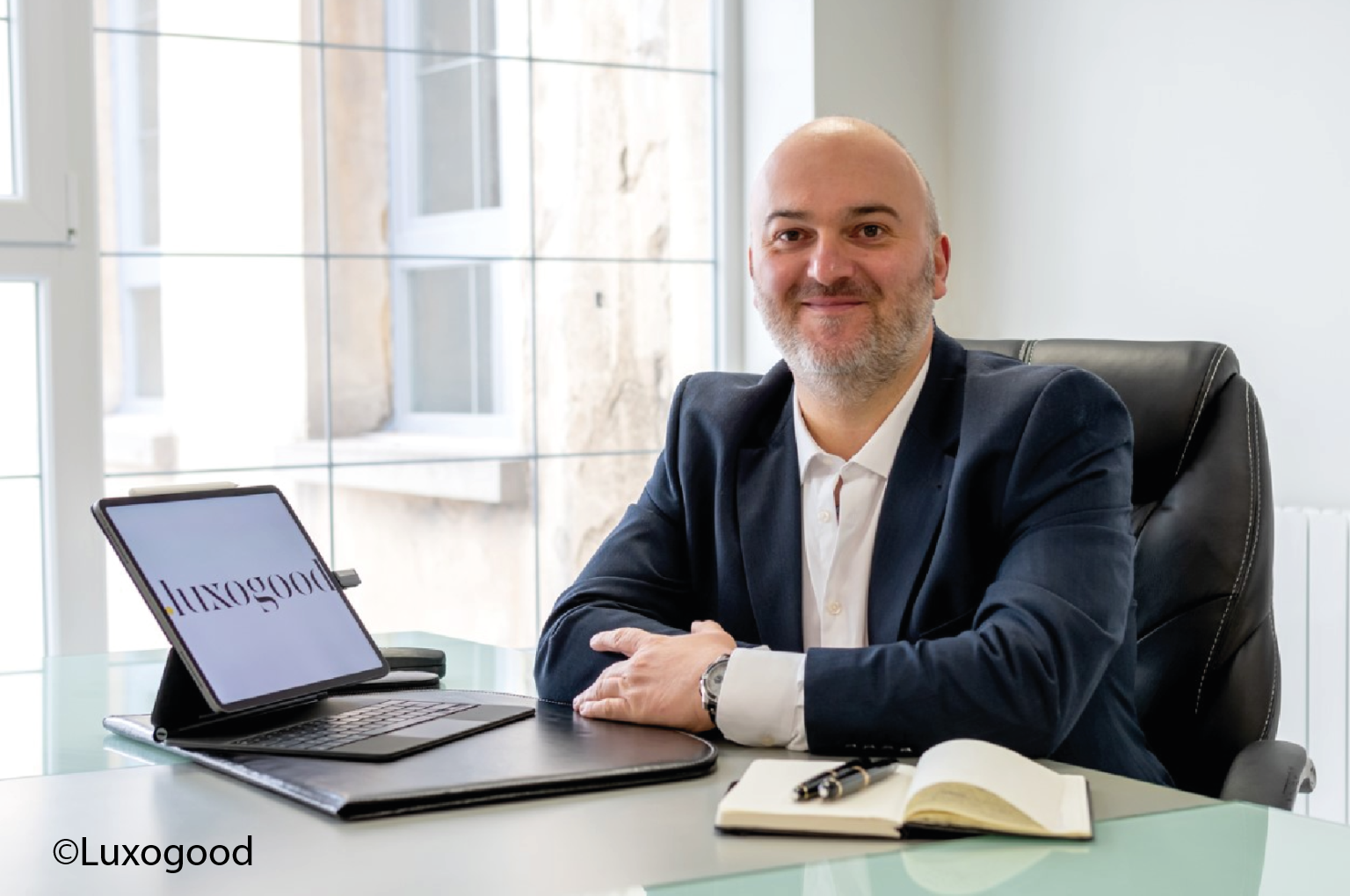
Luxogood
- Type de project: creation
- Activité : luxury
- Location: Morteau (25)
- Partners Conseil régional de Bourgogne-Franche-Comté, BPI, Initiative Doubs Territoire de Belfort, Numerica
- Expected jobs: 3
Aware that the luxury market lacks an actor to act as a link between brands/sellers/customers, the project leader Maximilien ROUSSEL- GALLE has the idea of creating LUXOGOOD, an innovative digital platform for the sale of “second hand” luxury products with high added value, with a real valorisation of customers and know-how. LUXOGOOD will be the privileged partner of luxury professionals, making the most of the network and knowledge of local players in the world of luxury crafts. Mr ROUSSEL-GALLE presented his project to the Agency, which supported him in his creation project in terms of networking (marketing, creation of the platform) as well as in the preparation of the creation aid file.
Object luxury
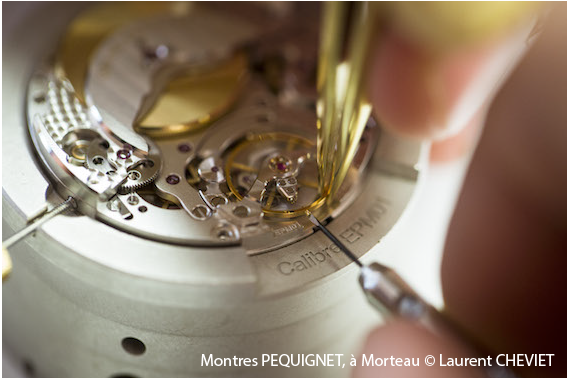
Watchmaking: 1st watchmaking region in France
60% of national staff – 34% of establishments
The Haut-Doubs, cradle of watchmaking
In the 18th century, from blanks to clocks, from hands to clocks, from crowns to watches and from mechanisms to barometers, farm workshops created the machines and tools necessary for the production of timepieces. Since then, watchmaking know-how has given rise to a dense network of small businesses whose skill and ingenuity are still highly sought after. Complementary, sometimes competing, these companies form an unprecedented network of skills that are indispensable in the luxury sector.
Besançon, capital of watchmaking
Besançon’s history has been linked to the measurement of time for over 200 years. “It was thanks to the creation of a watchmaking factory at the end of the 18th century by Laurent Mégevand from Geneva that Besançon became the French watchmaking capital. The watchmaking crisis of the 1970s took its toll on a good number of companies, but not all. The city, capital of the watchmaking “SAV”, is seeing the development of a new generation of watchmakers determined to write a new page in the history of watchmaking in Besançon.
Jewellery – Jewelry
940 employees – 41 establishments
The skills of the stone industry are combined with those of the watchmaking industry in the regional companies. At the end of the 19th century, working with diamonds and precious stones gave rise to a diamond industry that employed nearly 1,500 workers. Today, Besançon is one of the main players in the jewellery industry.

Eyewear
1,000 employees – 44 establishments
The Haut-Jura, cradle of the eyewear industry
The Haut-Jura, a mid-mountain region, is an exceptional environment classified as a Regional Natural Park where home workshops have metamorphosed into small businesses, and then into an industry specialising in eyewear, woodworking, metal and then plastic. Morez is the international capital of eyewear, Moirans-en-Montagne the capital of woodworking, and Saint-Claude was the capital of diamonds.
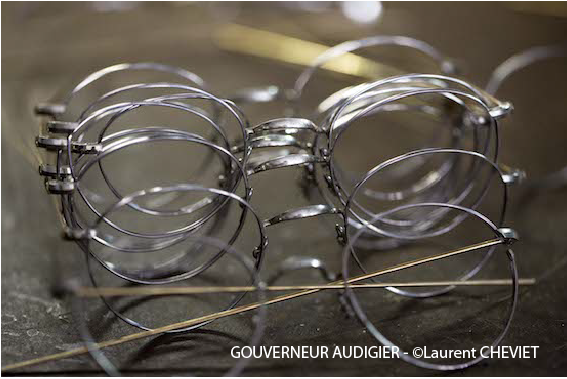
Leather goods
3,500 employees – 44 establishments
Pays de Montbéliard, a reference centre for leather goods
From 1752 onwards, Swiss watchmakers settled in the County of Montbéliard, thus complementing the agricultural, metal and textile activities that dominated the economy at the time. The inhabitants were trained, settled on their land and traded with Switzerland. Since the 19th century, the automobile has replaced the watchmaking industry.
In 2013, it was the announcement of the creation of two new factories by Hermès, bringing a new diversification in the economic strategy: the Montbéliard region became a “leather goods centre”. Supported by the local authorities, the creation of this centre, which aims for excellence, relies heavily on its training offer.
In the 21st century, leather goods are experiencing sustained growth. In the heart of the Auxois in the Côte-d’Or, in Haute-Saône or in the middle of the fir trees in the Doubs, workshops are being created.

Pierre de Bourgogne
2nd largest limestone producing region in France, 49 companies
The stones of Burgundy were used very early by men before being used as dimension stones. There are more than 45 types of stone, exploited in particular for their aesthetic characteristics. When you superimpose a geological map of the region on that of the stone extraction basins and that of the Burgundy vineyards, you can see that stone and wine are exploited in the same regions.
In June 2018, Burgundy stone becomes a label!
With its brand new Geographical Indication, Burgundy stone is the most important sector in France in terms of companies.
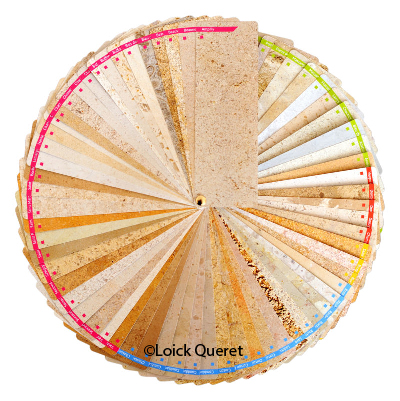
Experiential luxury
Tableware: ceramics for domestic and ornamental use
550 employees – 16 companies
Nevers, historic centre of ceramics
Nevers is one of the few ceramic centres to have worked continuously from the end of the 15th century to the 19th century. The link with the Italian centres is certain. Saint-Amand-en-Puisaye benefits from a soil offering a high quality clay which has led it, over the centuries, to become an important centre of the pottery industry. The International Training Centre for Art and Ceramic Professions has been developing a comprehensive training programme there since its creation in 1976.
The Ceramic Valley
At the beginning of the 20th century, the region of Digoin and Paray-le-Monial, known as the “valley of ceramics”, was home to some forty factories, each with its own specific know-how. Activities diversified, from tableware to ornamental ceramics.
This tableware sector is home to many companies whose products are used all over the world. Cristel cookware, Lacanche gourmet pianos, de la Rochère tableware and Peugeot pepper pots are all emblematic products of high gastronomy and a real art of living.

Gastronomy
156 AOC / AOP / IGP – 33 grands crus classés – 65 luxury 4* and 5* hotels
35 Michelin-starred restaurants
Beaune, the capital of Burgundy wines
The wines of Burgundy will finally be given free rein to express themselves. Far from being confined to confidential cellars and sometimes inaccessible estates, Burgundy is finally revealing itself with a Climats Interpretation Centre and a Cité des Vins: 14 hectares entirely dedicated to the precious Burgundian beverages, a 22-metre tower designed by a renowned architect to decipher the coastline with eyes riveted on the vineyard, a 5-star hotel, a gourmet hall that can accommodate 1,200 people, ephemeral restaurants with prestigious chefs at the helm, the possibility of tasting the 1,247 Burgundian climats, and a park to clear the mind and do yourself good with a contemporary art trail. All this, without a car and easily accessible.
Dijon, International City of Gastronomy and Wine
The French gastronomic meal, consecrated in 2010 by UNESCO, has inspired the people of Dijon. Hedonists, fervent defenders of the terroir, lovers of Burgundy wines, they have imagined a City that will pay tribute to an entire part of our culture: gastronomy and wine. On the historic site of the city’s former General Hospital, a hybrid space is taking shape. A cultural centre, a training centre, shops dedicated to the food industry, a top-of-the-range hotel, a cinema, an architecture and heritage interpretation centre: an entire district is preparing to become the emblem of French gastronomy. One million people are expected to visit the Cité Internationale de la Gastronomie et du Vin every year.
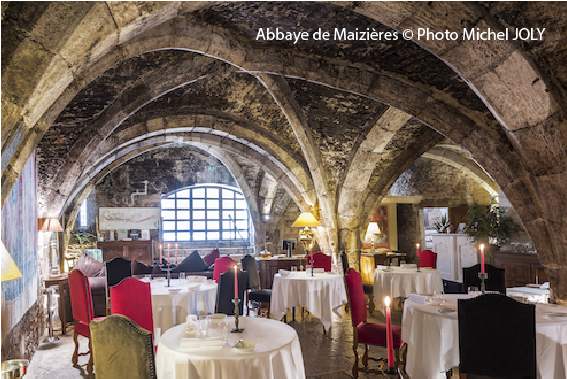
Exceptional heritage
4 Regional Nature Parks – 8 UNESCO World Heritage Sites
209 classified sites – 3,695 protected buildings
Throughout its history, Bourgogne-Franche-Comté has stood out for its extraordinary architecture and its natural sites that bear witness to a fantastic geology. Globe-trotters, pilgrims and epicureans: a break is in order in Bourgogne-Franche-Comté!
The region is also listed as a World Heritage Site for the intangible skills of watchmaking and art mechanics.
These visionary architects
They were visionaries, idealists and humanists, shattering codes through their works. Le Corbusier and Claude-Nicolas Ledoux left their mark on a region that welcomed them with open arms. The Royal Saltworks of Arc-et-Senans, the work of Ledoux, has been recognised by UNESCO since 1982. It is one of the largest saltworks in Europe of its time, designed to transform brine – extracted from the Salins-les-Bains saltworks – and transfer it to Arc-et-Senans via a 21 km-long brine pipeline. Its construction, which began in 1775, is a modern and utopian extension of the Grande Saline of Salins-les-Bains. Even today, Ledoux’s work, the Cité idéale, is astonishing in its excessiveness.
Le Corbusier was certainly an idealist too! In Haute-Saône, perched on the small hill of Notre-Dame-du-Haut, the Chapelle de Ronchamp (listed by UNESCO since 2016) is the architectural creation of the famous architect. A place of great historical, artistic and spiritual value, it is a marvellous play of light and matter, inciting to silence and prayer.
Know-how nurtured by innovation and training
- Observatoire de Besançon – The Besançon Observatory is one of the three organisations in Europe authorised to issue a watch with the title of mechanical chronometer.
- Pôle des Microtechniques – Its main mission is to represent, animate and federate companies with microtechnical know-how. 4 target markets including the luxury sector.
- Institut FEMTO-ST – Its thematic field covers optics, acoustics, micro-nanosciences and systems, time-frequency, automation, computer science, mechatronics, as well as mechanics and materials, energy and electrical engineering. FEMTO-ST has two technology platforms used in the luxury industry: MIFHYSTO and MIMENTO.
- Laboratoire ICB – Much of the research developed in the ICB Laboratory is now directly applied in industry, enabling its partners to implement, in their manufacturing process, the innovations necessary to be competitive.
- Institut Utinam – UMR 6213 – Utinam is known as one of the leading French laboratories for everything related to surface reactivity.
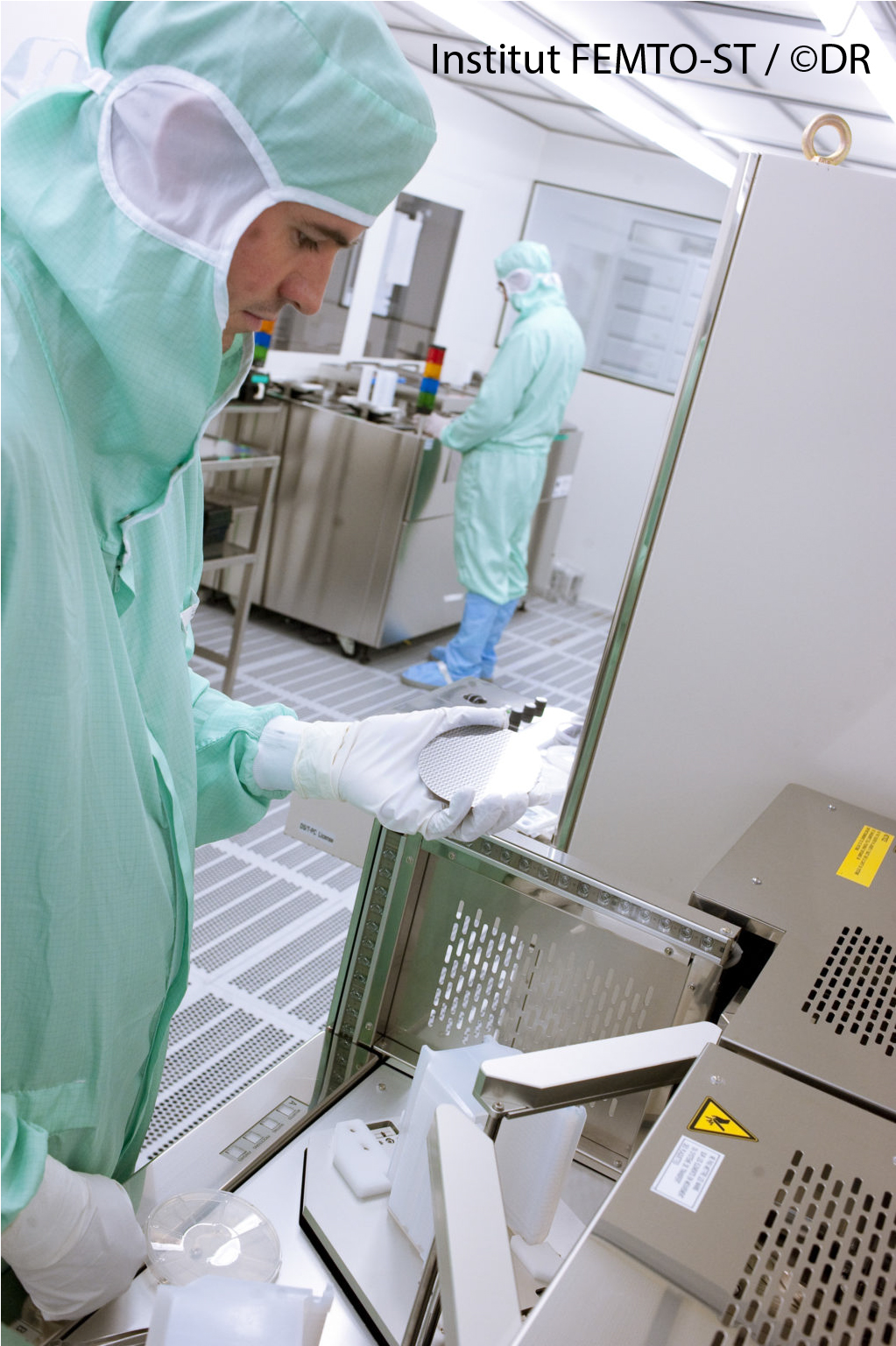
Groupings and clusters, innovation expertise
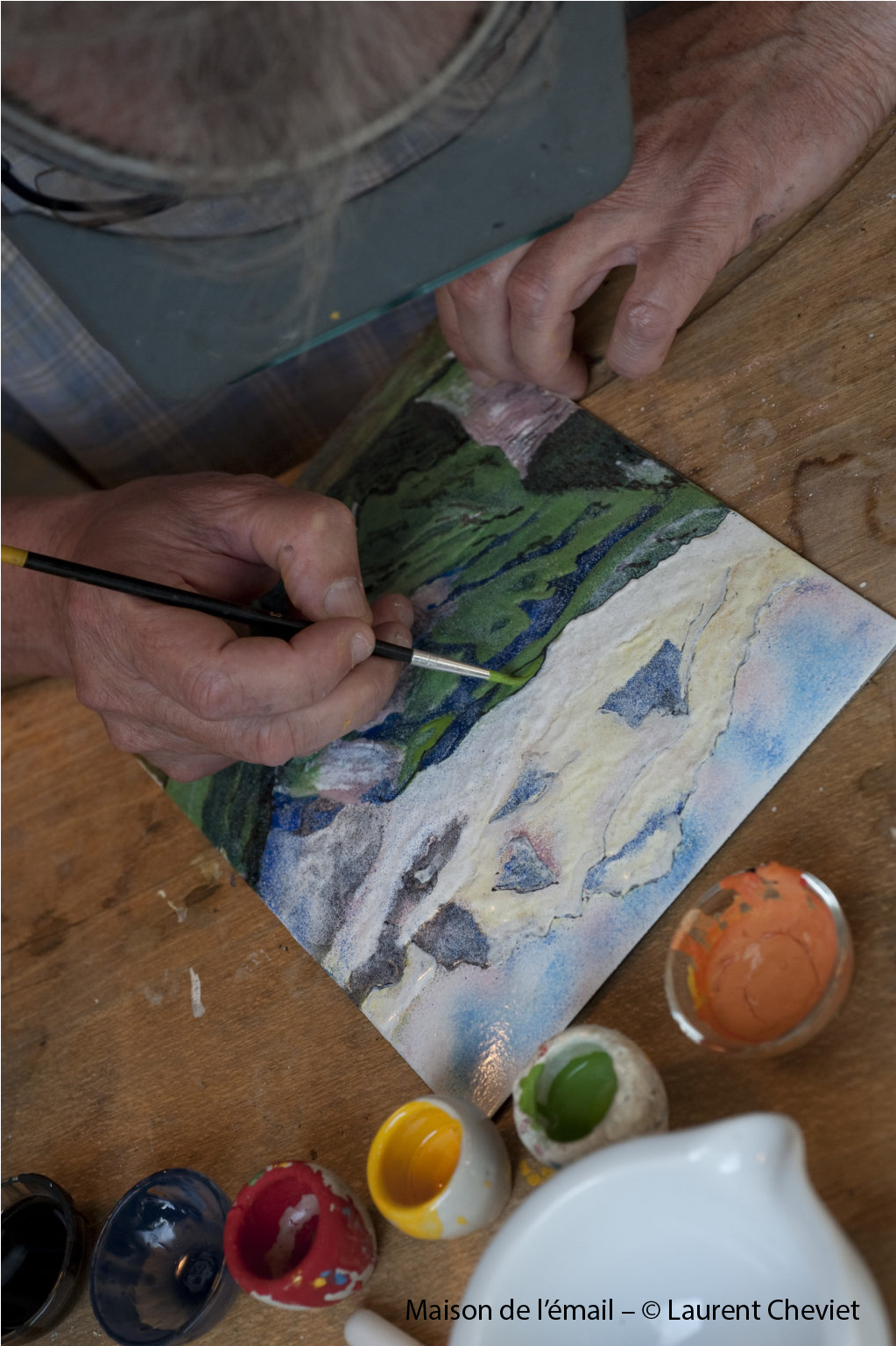
- Cluster Luxe & Tech – Luxe&Tech’s primary mission is to animate this dense and complex network of companies in order to create a real collective dynamic between these luxury players.
- Comité FRANCÉCLAT – Professional economic development committee serving the watchmaking, jewellery, goldsmiths and tableware sectors. It implements a programme of collective actions defined by the professionals themselves. In total, more than 300 professionals participate in the Committee’s reflection and decision-making structures.
- Association régionale des EPV : 7th regional association of EPV created in France, its main stake is to preserve and make visible the “made in France”, and thus in Bourgogne-Franche-Comté. The association’s objective is to encourage discovery, sharing, reflection, enrichment and action among its members. By creating synergies, helping each other with exports, communicating collectively, the association’s mission is to perpetuate high quality, high value-added know-how and to make the value behind the brands and productions known.
- Entreprises de Lunetterie du Massif Jurassien – This regional network brings together more than 50 solidarity-based companies (more than 1,000 direct jobs) that work and innovate for more than 100 labels or brands, and produce more than 2.5 million frames per year.
- Association Pierre de Bourgogne – It provides a link between these different companies in order, on the one hand, to promote exchanges within the stone industry and, on the other hand, to act as a federator to represent common interests.
- Package In Bourgogne-Franche-Comté – The aim of Package in Bourgogne-Franche-Comté is to bring together company managers from a wide variety of sectors of activity, all of which contribute to the production of packaging or packaging solutions in the region.
- FIBOIS Bourgogne-Franche-Comté – FIBOIS Bourgogne-Franche-Comté aims to develop the production, mobilisation, exploitation, use, transformation and promotion of wood from Bourgogne-Franche-Comté.
- Vêtir en Bourgogne – The aim of the Vêtir association is to unite the companies in the sector, whatever their trade or size, to develop synergies and to share common needs.
- Maison de l’émail – For nearly twenty years the Maison de l’Email, an association under the law of 1901, has been working to maintain and develop the enamelling activity in Morez.
Pathways to excellence, unique training courses in France
Le Campus des Métiers de la Maroquinerie & des Métiers d’Art
The Campus des métiers de la maroquinerie et des métiers d’art is based in Montbéliard, at the Lycée professionnel Les Huisselets, which is home to the Campus des Métiers et des Qualifications (CMQ). In Bourgogne-Franche-Comté, leather goods is a sector where the training offer is already well structured and visible. This is not the case for the art trades.
The Microtechnology and Intelligent Systems Campus
Territoires d’innovations pédagogiques: Memitech project (Métiers des Microtechniques) brings together representatives of the economic world, institutions, training and research representatives and more than 50 companies in 4 of the 10 industrial territories of Bourgogne-Franche-Comté.
Mechanical Engineering and the Luxury Industry
Opening in September 2020, this new programme trains engineers who will acquire both technological know-how and the culture of luxury. It completes the courses created by ENSMM at the request of industrialists. The ENSMM has joined forces with the CMQ Microtechniques et Systèmes Intelligents and the Lycée Édouard Belin in Vesoul to create an experimental training programme based on high school students’ appetite for technical professions and the emotional intelligence of teenagers who could be failing on the basis of their school results alone. This course enables them to obtain five different diplomas in five years.
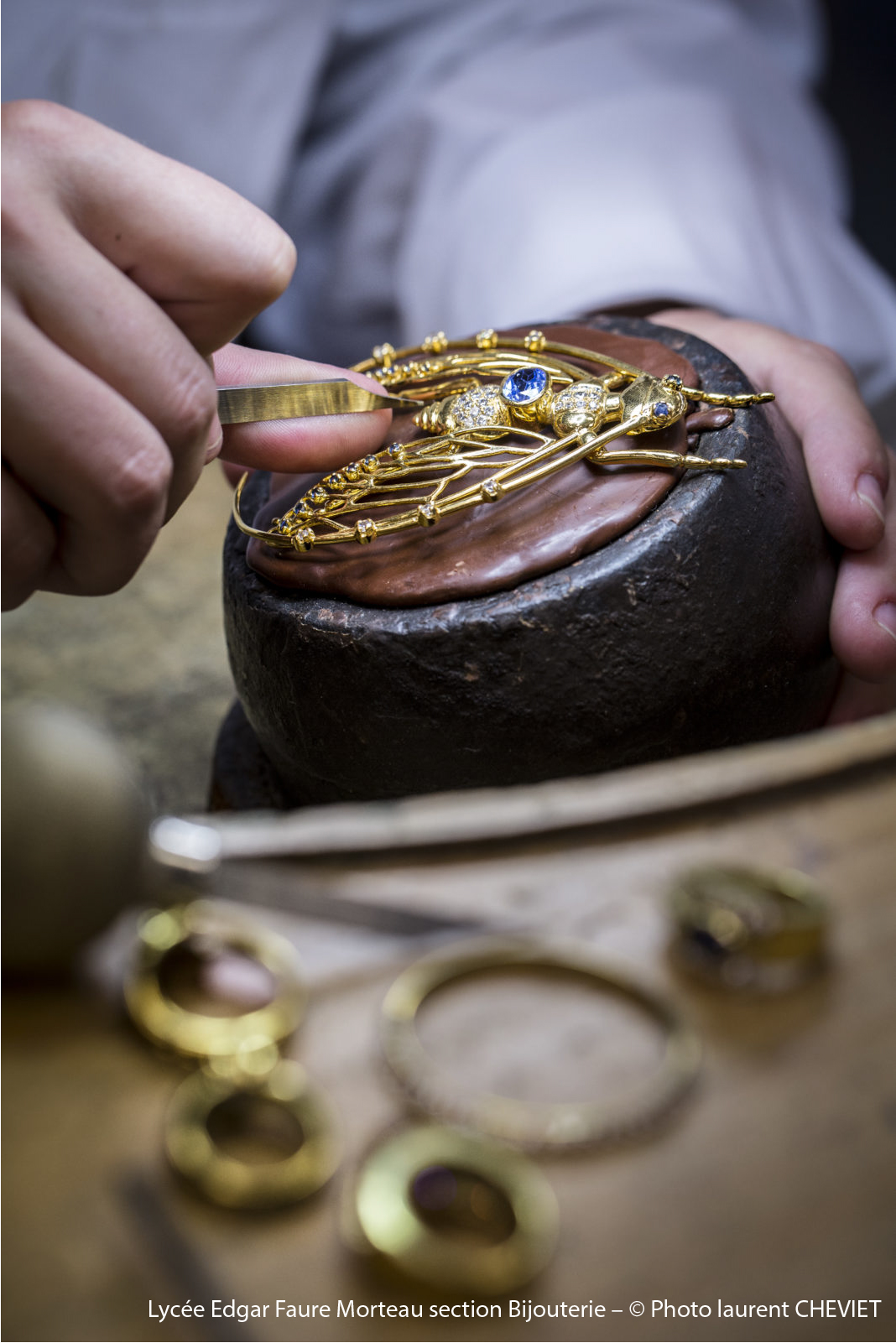
5 technology platforms:
- Lycée E. Faure / Lycée J. HAAG – Microtechnology and prototyping.
- Lycée V. Bérard – DISO and optical solutions.
- Lycée du Bois – TECBOIS.
- Lycée E. Belin – High-speed machining.
- Lycée Les Huisselets / CFA Pays de Montbéliard / UTBM (Edim) – The Leather Academy.
Further resources
- Download INFLUENCES Magazine n°7 Manufacturing Secrets – Luxury & exceptional know-how (June 2023)
- Download the INFLUENCES Magazine Special Talents in Luxury (June 2022) (fr)
- Download INFLUENCES Magazine n°6 Manufacturing Secrets – Luxury, inspiration & creation (May 2022) (fr)
- Download INFLUENCES Magazine n°5 Manufacturing Secrets – The experience of the essential (September 2021) (fr)
- Download INFLUENCES Magazine n°4 Manufacturing Secrets – Creative Disruption (March 2020) (fr)
- Download INFLUENCES Magazine n°3 Manufacturing Secrets – Meetings / The factory of emotion (February 2019) (fr)
- Download INFLUENCES Magazine n°2 Manufacturing Secrets – Luxury & Exceptional Know-How (June 2018) (fr)
- Watch the video “Besançon, coeur et âme de l’horlogerie française”
- Watch the video “Maroquinerie en Franche Comté : du cuir, du métal et de l’imagination !”
- Read the newsletter “Bourgogne-Franche-Comté, land of success, innovative territories
- Read the article “Les microtechniques du futur en Bourgogne-Franche-Comté”
- Read the article in Le Bijoutier International Magazine N° 841 April/May 2018 “Bourgogne-Franche-Comté, la dynamique du mouvement”


